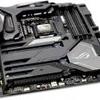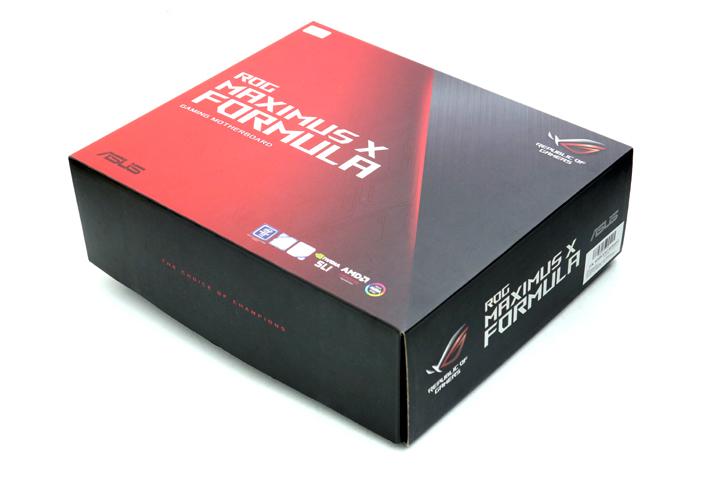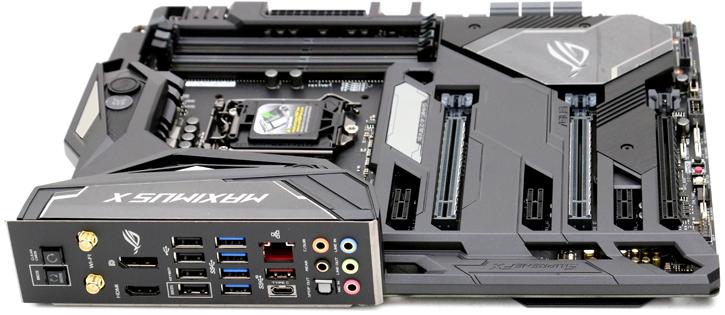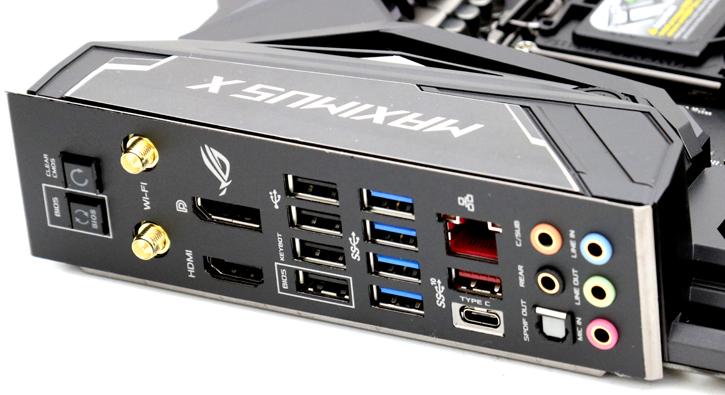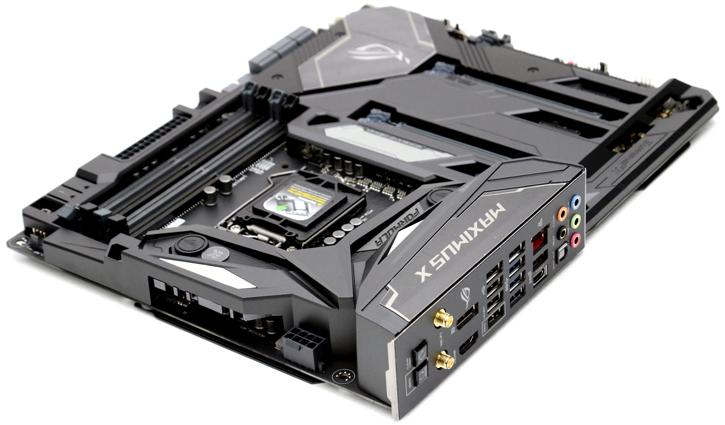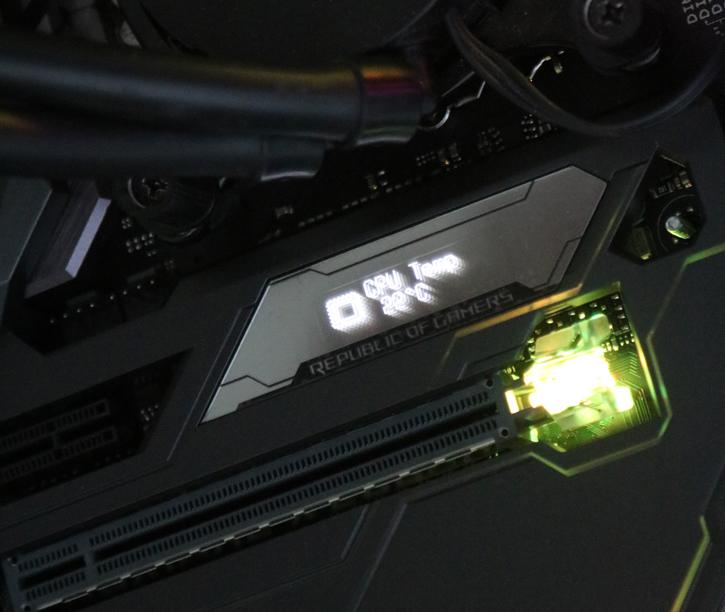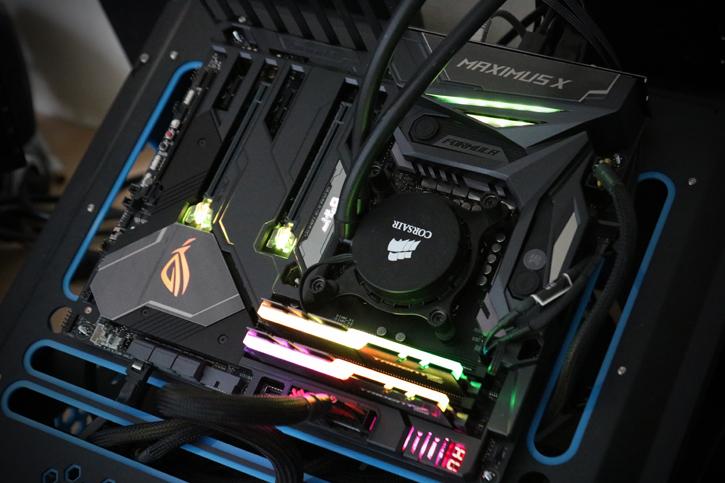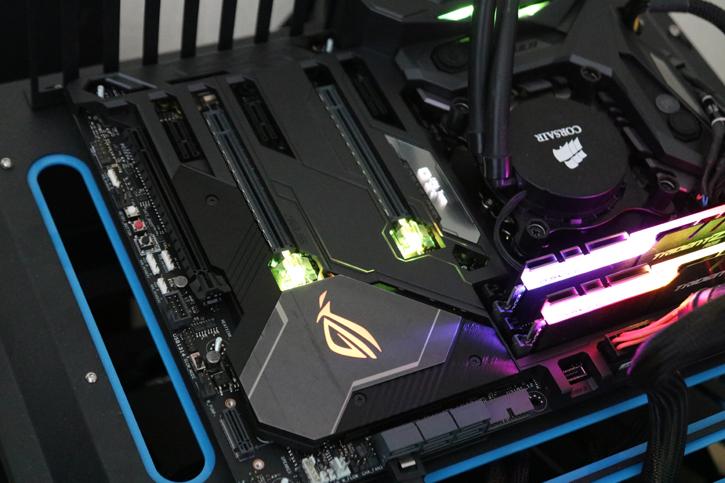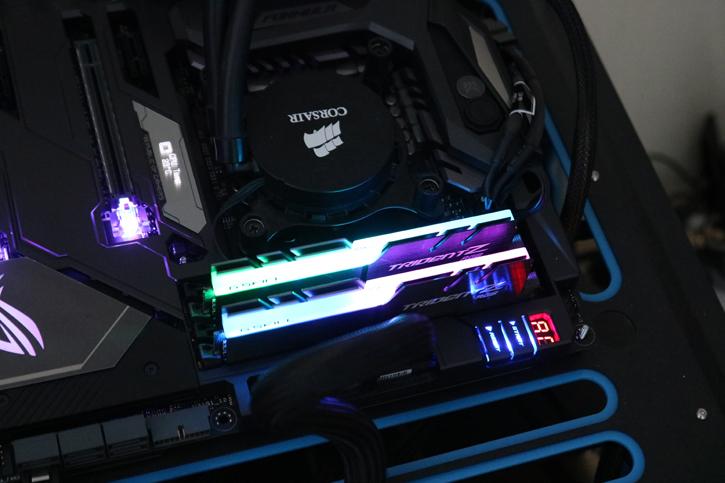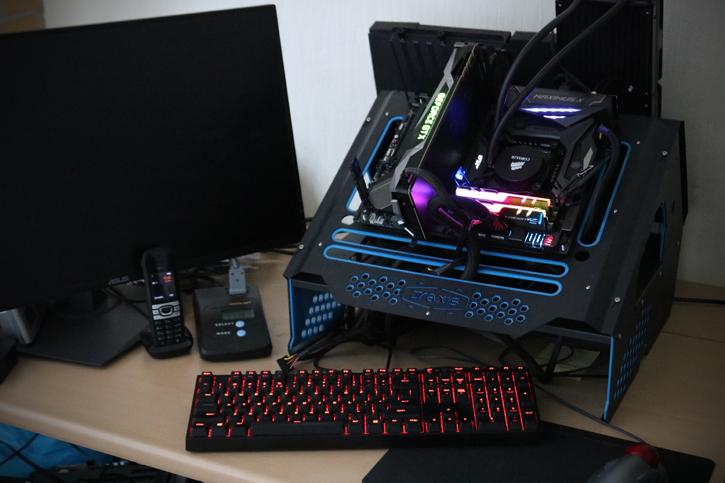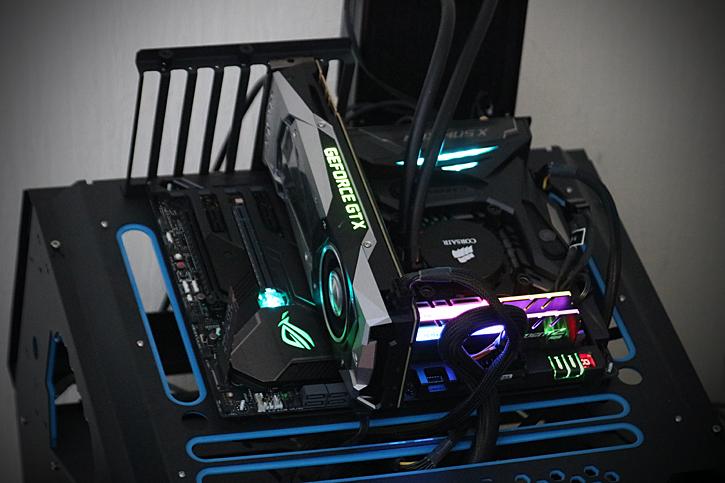Product Showcase
The motherboard is a more mainstream to high-end segment solution in that Z370 series motherboard range. ASUS packs it with features like DDR4 XMP support up to 4133 MHz, dual PCIe Gen3 x4 M.2 and Gigabit LAN (Intel L219). The board also comes with AC WIFI, other than that there's everything you can expect from a performance motherboard really.
The VRM area is covered by a CrossChill EK II and Water Cooling block which you can add to your loop (or just leave passive). The motherboard includes all of the standardized Z370 enhancements like the ability for dual x4 PCIe Gen3 lane configured M.2 SSD slots (RAID compatible) and will support multi-GPUs (two). You'll also spot a variety of USB3.1 Type-A & Type-C Gen2 ports.
The board comes with the following PCIe slots:
- 3 x PCIe 3.0 x16 (x16 or dual x8 or x8/x4/x4)
- 1 x PCIe 3.0 x16 (max at x4 mode)
- 3 x PCIe 3.0/2.0 x1
The I/O panel of the mobo shows ten 3.1 ports with one type-c connector. Intel does not have native USB 3.1 Gen2 support from the processor hence the mobo makes use of external 3rd party controllers like the ASMedia 3142.
A Realtek ALC S1220A audio codec. The board reveals the 10/100/1000 Ethernet jacks, Intel I219V (in red), unfortunately, the board has not been fitted with a AQC108 5G LAN jack. There aren't any PS/2 or Mouse ports present either. Other than that you will see an HDMI as well as a DisplayPort connector, they stripped out the DVI port.
The board shows one 8-pin ATX power header for the processor (which is plenty). The primary grey colored PCIe x16 slots are metal reinforced, great if you use heavy graphics cards. The rear of these slots have RGB LED lighting, as we'll show you in the photos below.
Onboard you will spot an OLED Display screen, INCREDIBLY hard to photograph, with your own eyes this is a readout you can visually see perfectly, however photographing it ends up in a weird mirror-like effect. The OLED screen posts, say, your name or logo, and when the system is powered on, it'll show POST status codes and in the end stuff like your CPU temperature. It's pretty cool, located well and a very good read out.
Once powered up, the aesthetics change quite a bit as ASUS implements that Aura SYNC RGB system. You can customize anything in any color and animation, use a static color and simply turn it all off if you dislike it.
For the Formula, there are many LED array/zones located at the bottom and top side of the mobo. You can turn them off, on, leave it at default for a rainbow effect or completely regulate them with AURA SYNC software to whatever your preference is.
